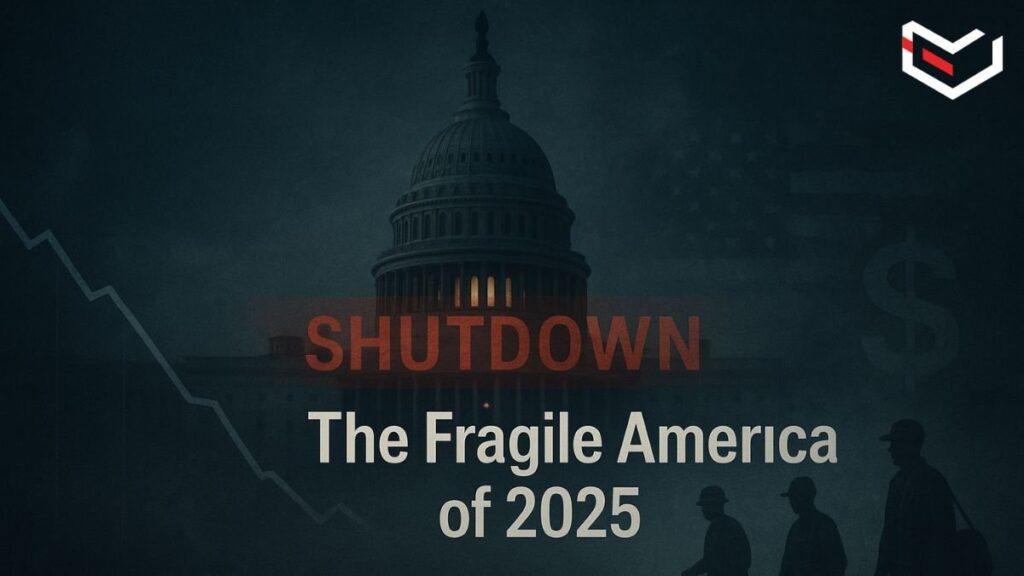The 2025 U.S. Government Shutdown: A Perfect Storm for Global Supply Chains in a Fragile World
Summary
The article compares the 2019 U.S. shutdown with the October 2025 standoff and explains why the latter poses a much larger threat to global trade. Key drivers are a softer US labour market, stickier inflation, and a collapse in public trust — all of which amplify the economic and operational shocks that a shutdown produces.
It outlines concrete impacts on imports, customs processing and costs (demurrage, delayed approvals), and shows how weakened demand, price volatility and institutional mistrust could multiply the 2019 damage. The piece ends with a short playbook for trade and supply-chain leaders: diversify signals, shore up regulatory buffers, and rebuild trust through transparency and public–private cooperation.
Key Points
- 2025 shutdown risks are larger than 2019 due to weaker labour market, higher inflation and lower public trust.
- Rising US unemployment and furloughs will reduce discretionary import demand, hurting exporters and manufacturers globally.
- Understaffed customs and regulatory agencies (eg CBP, FDA) can extend dwell times and inflate demurrage and approval delays.
- Sticky inflation (c.2.7–2.9% in 2025) and tariff shocks raise landed costs and prompt shifts towards costly local sourcing or overstocking.
- Trust erosion increases precautionary behaviour by firms and investors, potentially accelerating de-globalisation and reducing trade volumes.
- Practical mitigations include multi-source demand signals, pre-stocking regulatory approvals, private lab inspections, nearshoring hedges and blockchain transparency efforts.
Content summary
The author opens with a short recap of the 2019 shutdown’s modest macro effect and then contrasts it with the October 2025 situation: higher unemployment, slower payroll growth and persistent inflation have left the US economy much less resilient. With federal furloughs and understaffed regulatory agencies, port and customs friction rises — hitting time-sensitive goods and increasing costs for importers and carriers.
The piece quantifies impacts where possible (examples: unemployment up to 4.3%, inflation in the high 2s, potential weekly costs of $5–7bn in delayed goods for prolonged shutdown periods) and explains second-round effects: reneged letters of credit, contract renegotiations, overstocking and working-capital pressure for emerging-market suppliers.
It closes with a short, actionable playbook for supply-chain leaders: improve forecasting with diversified signals and AI, fortify regulatory and inspection buffers, pursue nearshoring as a hedge not a panacea, and invest in trust-building measures such as public–private contingency dialogues and transparency tech (eg blockchain).
Context and relevance
This analysis is important for procurement heads, logistics managers, carriers and trading partners who rely on predictable US demand and timely regulatory clearances. The article situates the shutdown within broader 2020–25 trends: geopolitical tensions, tariff volatility and supply-chain reconfiguration efforts (nearshoring/reshoring). Those managing global flows must reassess risk models: what was a short-term nuisance in 2019 could be a multi-week liquidity and operational shock in 2025.
For regions supplying the US — Asia, Europe, Latin America and Mexico under USMCA — the piece is a timely reminder to test contingency plans, renegotiate service-level agreements, and model the cashflow effects of slower receipts and higher demurrage/penalties.
Why should I read this?
Short answer: because if you work with imports, exports or inventory that touches the US, this is exactly the kind of sharp, focused primer that tells you which levers to pull now — not next quarter. It’s quick, practical and a good checklist for immediate contingency moves (forecast tweaks, pre-clearing approvals, rethink JIT assumptions). Read it to avoid being the one left scrambling when ports and approvals slow down.
